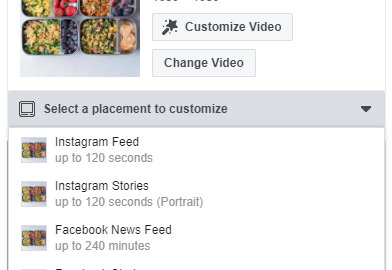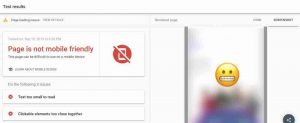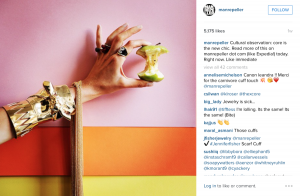— July 15, 2019
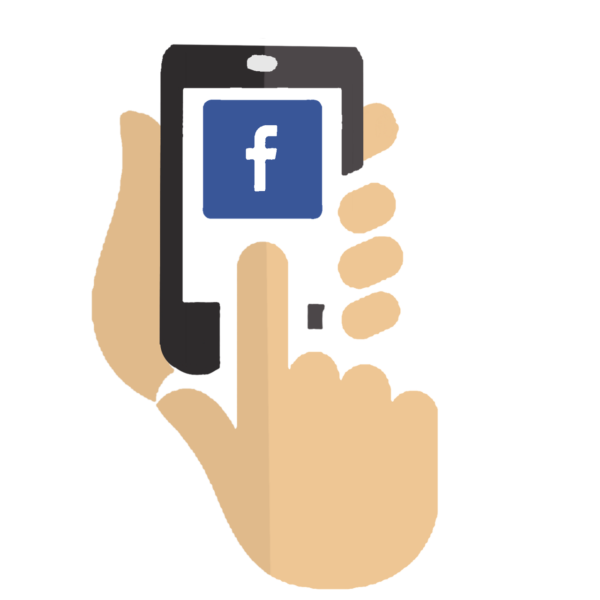
mohamed_hassan / Pixabay
If you’re from the midwestern United States, as I am, you’ve noticed that the seasons have finally shifted. Winter feels like a memory, you’re hearing outdoor music more often, and grills are alight.
With the change of seasons, our calendars fill with outdoor events, parties, and concerts. If your brand is joining the fray and hosting some festivities of its own, you’ll want to ensure that your events stand out from the crowd and get folks in the door. Aside from organic social media sharing (which you should definitely be doing!), it’s important to use Facebook and complimentary advertising to attract people to your events this season.
Use Facebook Events
So this one is fairly obvious. Hopefully, this is the first thing you do! There are a ton of features and benefits to using Facebook event pages and the more you invest in them, the more you get out of them. Setting up a Facebook event is easy, but using them to their fullest extent isn’t as straightforward.
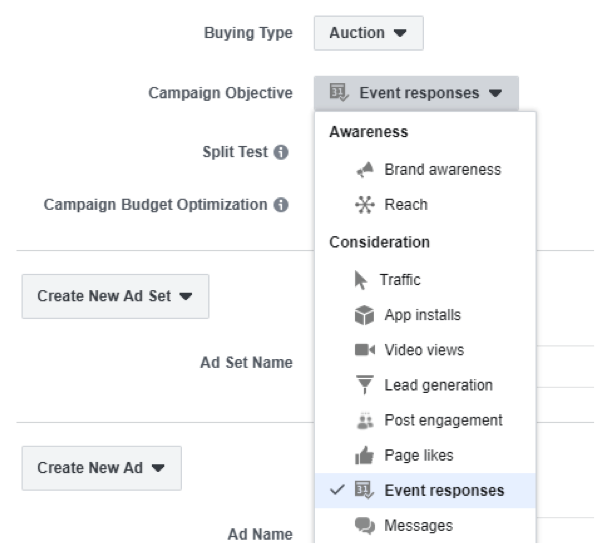
The first thing you should do to extend the reach of your Facebook event page is to promote the event using Facebook Ads Manager. When you set up your event, it’ll automatically post to the page that’s hosting the event, but you’ll want to start using ads to influence a wider audience. For your ads, you should use the Event Responses campaign objective. In order for your ads to succeed, you’ll need to ensure that your audience targeting is on point.
Target the Right People
When you use Facebook Events as your main registration page (instead of hosting a separate landing page on your site), it becomes very easy to advertise within the platform. I strongly recommend targeting these three segments with your event’s ads:
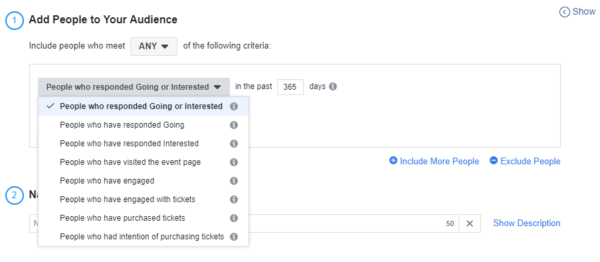
Top of Funnel: Drive Awareness
For events, focus on lookalikes of your ideal attendees. Interest targeting can work really well for top-of-funnel advertising. Make sure you group similar interests into their own ad sets so you can see performance on the theme (e.g., Tech vs. Advertising). For these ad sets, create messaging to move those users who showed interest—but didn’t register—across the finish line.
From a messaging standpoint, it’s important to use language that complements your creative. For instance, your creative may show the speakers at your event, but the copy would cover the current sale in ticket prices or the urgency to order. It’s ok to use longer copy in your upper-funnel advertising since these potential customers will ideally not have heard of your event yet.
Middle of Funnel: Getting Users to Register
Here you have lots of options. First, build an audience of people who’ve engaged with your brand’s content in the last 90 or 180 days. You can do this in the Audience Dashboard. Secondly, build a separate audience of people who’ve attended past events by creating a custom audience and selecting “Event” from the options. This allows you to create a ton of different audiences based on how people interacted with your previous events.
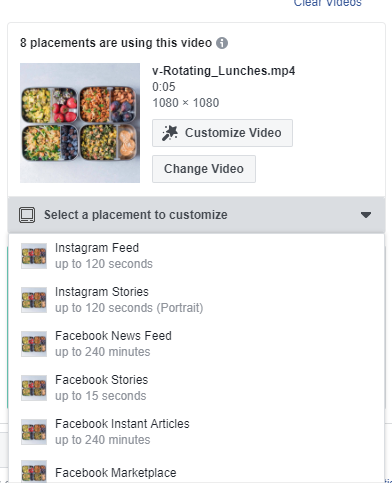
Keep your mid-funnel messaging short and punchy. Use short copy to quickly stress the importance and impact of the event. You could say “You won’t want to miss this [event]” and use the creative to highlight what they can expect to see or receive if they attend. Because people will know your brand and may have even heard of your event, no need to waste time trying to build brand affinity.
Bottom of Funnel: Convert Highly Interested Users
Finally, you should retarget people who’ve been to your brand’s website, started the checkout process, or filled out a contact form. You can often bid higher here and pick up a few extra conversions for fairly cheap, since these audiences have expressed a lot of interest in your company. This would also be where you add your attendees from last year if you have a list.
Your copy in the bottom-funnel ads should be similar to mid-funnel—short and punchy. However, you do have the opportunity to call out where your customers are in their journey. If the tickets were in their cart, for example, you could say “Finish purchasing your tickets! The prices goes up on [date].” Be sure the copy is hyper-relevant to the actions they’ve taken to keep it as effective as possible.
Use Instagram, Facebook, and Messenger Stories
The easiest thing to do with your event ads is to turn on Auto Placements and let them run, but you’d be remiss if you didn’t account for non-typical dimensions and platform differences in your placements.
To ensure that each ad that runs is correctly sized, you should create vertical and square videos or images to add as supplemental creative options on your ads. If you’ve selected all placements you can simply click “Select a Placement to customize” at the ad level and choose one of the story formats.
This is incredibly powerful because what works in Instagram Feed and Facebook News Feed is very different from the way people interact with stories formats on the platforms. For instance, showing a video in your brand’s Instagram stories of someone inviting people to the event and ending with “Swipe up for more information” will be a lot more impactful than a picture of the venue, which you might use in one of the feed formats.
Use the placements to your advantage! Pay attention to the format, creative, and messaging for each ad version and map out where they’ll be most effective.
Afterward: Build Your Audience
After all your planning is done and your event is over, you should be left with a lot of data. Whether or not you have plans for another event, it would be a great idea to get ahead of it and organize your data into lists for future use. It’s important to note that this info is not just useful for future events but should be nurtured in your funnel of potential customers.
In your event’s registration data, you should have a list of attendees’ names and emails. Assuming you had an advertiser disclosure in the Privacy Policy and Agreement, you can upload the list to Facebook as a custom audience.
Aside from actual registrants and attendees, you also have visibility to more data on your event’s page with the group of individuals who marked “Interested” but didn’t attend. You can use the tools in the Audience section of Facebook Ads Manager to build an audience of this group of people, and use it as a solid start for invites to the next shindig or for nurturing in your brand’s sales funnel.
If you had a separate online registration page hosted on your site, you should build a website custom audience of the individuals who viewed that page. Similar to the last audience, these people at least expressed some interest and will likely help you find folks who will convert easily next time.
Conclusion
Events have a lot of moving parts, and promotion is only a small portion of the things that need to be done to pull off a successful event. It is, however, a very important ingredient in that event’s success and should never be ignored.
Hopefully, these tips help demystify what it takes to organize Facebook ads to bolster your event’s visibility. Most of the tips here can be summed up to “build and use your list well,” so make this your credo! If you think strategically about how to use your owned and built lists, you’ll be in great shape.
Digital & Social Articles on Business 2 Community
(69)
Report Post